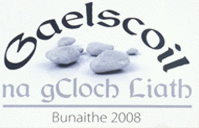Head Lice and Nits
What are they?
Head lice are small insects that live in the hair and feed off the scalp. They can be light brown, dark
brown or red. They have 6 legs, these legs have little claws on them which allow them to cling to the
hair. They don’t fly, jump or swim but move from head to head when there is close contact. The
female louse lays fertilised eggs which cling very securely with a glue like substance onto the hair
quite close to the scalp. It is practically impossible to stop your child getting head lice but regular
combing can lead to early detection and treatment
How do I know if my child has Head Lice?
You must use a fine comb regularly. Just looking is not enough as because of their variation
in colour they can be hard to see in the hair. Start as close to the scalp as possible, keep gentle contact
with the scalp for as long as possible and fine comb out to the ends of the hair. Rinse the comb after
each stroke and wipe on a tissue to clean.
Historically it was said that they settled in behind the ears and the nape of the neck – but that was
when our heads got colder. However now we wear hats or are in cars so they are happy anywhere on
your head.
If you have received notification of an outbreak, have fine combed and have not found any
infestation it is still best to finecomb the hair daily for a while so as to allow for time that those that
are infected use the treatment.
You should, routinely, fine comb once a week.
If you find some – you need to treat immediately. Check everyone in the house. Normally if one
person has them everyone is likely to have them. You need to let close friends and the school know.
There are a huge variety of treatments available so ask your pharmacist about what they would
recommend for you.
Some use insecticides which kill the lice, some use ingredients which cause the lice to become
dehydrated and then to die, others simply immobilize them so you can physically remove them from
the hair.
For those who are worried about using treatments too frequently there are other methods one of
which is the following.
Apply a regular conditioner (with or without a few drops of tea tree oil) liberally to the whole head.
Then divide the hair into sections and carefully fine comb section by section.
You will see the lice on the fine comb.
Remember these are not dead so you must wash them down the sink immediately.
Wipe the comb on a tissue and place the tissue in a plastic bag.
Repeat this process three more times leaving 3 days between each session. So treat on Day 1, 5 , 9
and 13 .
Then comb regularly and repeat if necessary.
Follow Up
Killing the first infestation of lice is relatively easy however it is getting rid of the eggs and the
newborns which is the hard part. The eggs once laid by the female are glued to the hair, close to the
scalp. They take from 7 to ten days to hatch then leave the shell stuck to the hair- these shells are
referred to as nits. They can be removed with a fine toothcomb but sometimes you will have to go
through the hair and physically remove them one by one.
The nits themselves, even though there may be no live lice, can cause irritation to the scalp.
Repeating the treatment on days 7 and /or 14 is so important so you can eliminate any newborns who
were at egg stage at the first treatment. You need to eliminate them before they start laying eggs and
set the whole cycle off again.
In summary
• Comb regularly
• Treat infestation if it occurs
• Tell others who may be infected
• Repeat Treatment every 7 days until clear

